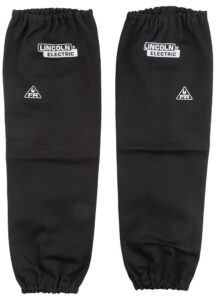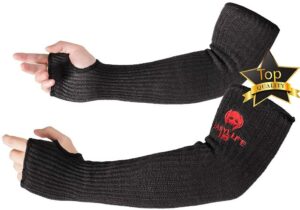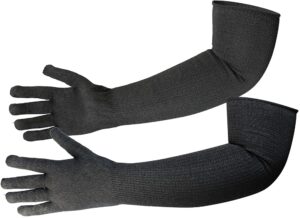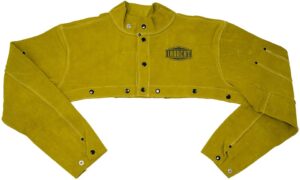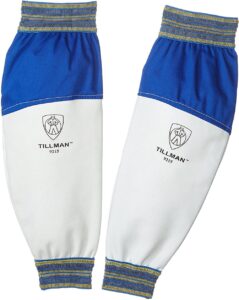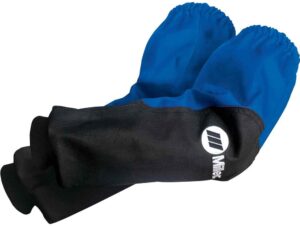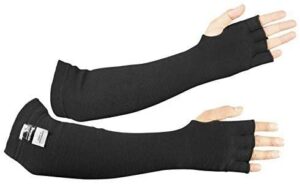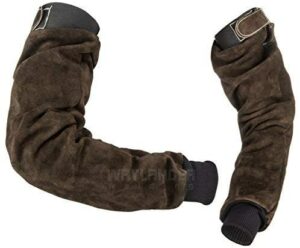Feature your business, services, products, events & news. Submit Website.
Breaking Top Featured Content:
Best Welding Sleeves That Keep Your Arms Safe From Burns
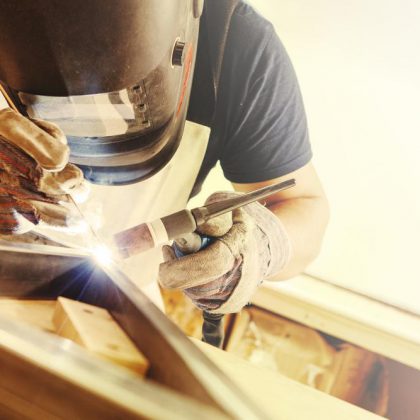
We will presume that you’ve taken the minimum precautions of getting yourself some basic protective equipment for welding, like welding goggles or welding gloves, but did you know that you also need welding sleeves to protect your forearms?

In order to create this guide, we researched what the Internet has to offer in terms of merchandise and compiled a list of the best welding sleeves that you can buy, where we ranked them based on efficiency, features, price, and user popularity.
Not only that, but we also added a small guide after the list where we will teach you precisely what you should look for in a pair of welding sleeves, and we will also talk about the importance of good-quality safety equipment.
What Are Welding Sleeves?
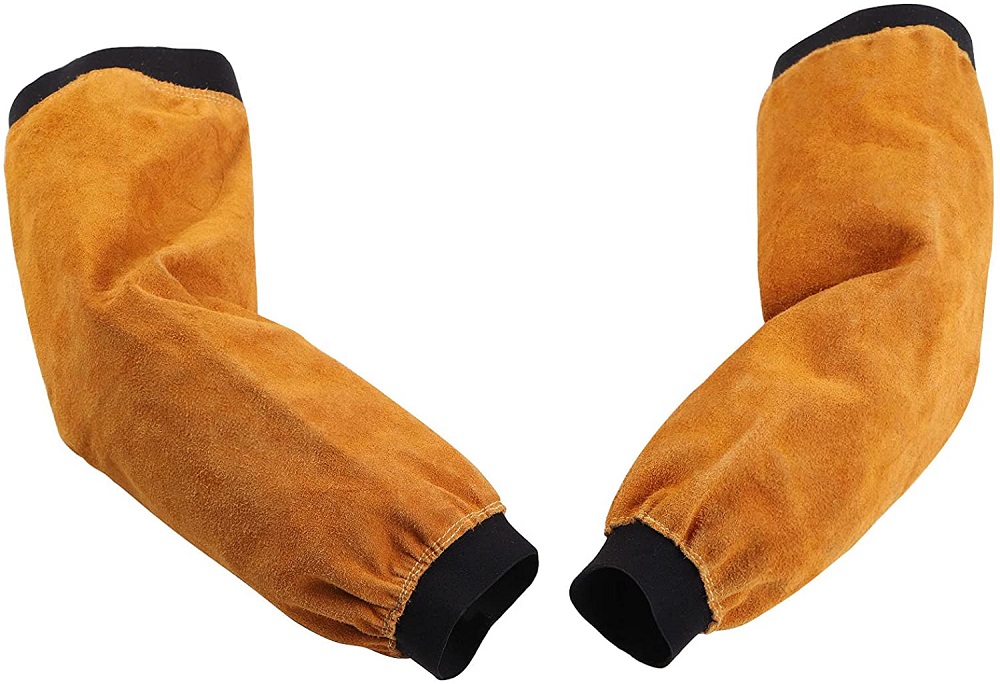
Welding sleeves are a type of personal protective equipment (PPE) that consists of a pair of removable fabric sleeves that are meant to shield the wearer’s arms, serving a similar purpose are long-sleeved gloves or welding jackets.
Sure enough, you can also get yourself a good welding jacket to cover your arms, but they tend to be rigid and restrict your movements, which is a drawback that welding sleeves don’t share.
They protect the wearer’s arms from all kinds of hazards that you would normally associate with welding, including sparks, splatter, heat, UV and IR radiation, and more.
Besides, if the sleeves are made of the proper materials, they can even serve as a form of physical protection against lacerations and piercing from falling pieces of sharp metal.
Typical materials used for making welding sleeves usually have to meet certain criteria, such as:
- They mustn’t restrict movement
- They must let your skin breathe
- They need to be flame resistant
- They need to be heat resistant
- They must be elastic
There’s no exact standard regarding how long sleeves need to be, but it’s usually best if the cover is as much as possible. Besides, welding sleeves sometimes have features that allow you to attach them to other pieces of personal protection gear, such as your welding gloves, offering you complete coverage over your hands and arms without any exposed areas.
There are even sleeve designs that include gloves with thumbholes so that your wrists will be completely covered as well. On the other hand, you can also go for extra-long welding gloves, although these usually don’t cover your entire arms properly.
Why Do I Need Welding Sleeves?
Welding involves melting and cutting heavy chunks of metal like iron, steel, or copper, and this means exposure not only to intense heat and light but also ultraviolet radiation, especially if you’re arc welding.
Long-term exposure to such radiation can lead to a wide variety of problems, including an increased risk of skin cancer, especially in the case of your body parts that are closest to the arc itself: your hands and arms.
That’s where welding gloves and welding sleeves come into play, as they keep your skin safe not only against welding-specific hazards like heat, sparks, and splatter but also other workplace-specific hazards, like electric shocks, corrosive materials, or toxic gases.
Where Can I Buy Welding Sleeves?
Personal protective equipment can be found all over the place, both in physical hardware shops as well as hardware-specific websites. However, welding sleeves are the type of products that you have a high chance of returning upon purchase, mostly because you may have misjudged their size.
More so, every manufacturer will always advertise their product as the best, and it’s hard to trust a website where they have 25 products labeled as being the best, and that is why another important criterion that you need to look out for is the ability to see what common users really think about the product.
One website that has both of these features is Amazon, so if you’re interested in true 100% product transparency, go ahead and shop for safety equipment there first.
User reviews are always on spot, and some even go so far as to provide extensive reviews about a particular product, including the way they look, how long they lasted, their pros and cons, and more.
All in all, if you’re on the market for a reliable pair of welding sleeves, look no further than Amazon.
Which Are the Best Welding Sleeves on the Market?
4. QueeLink Leather Welding Work Sleeves
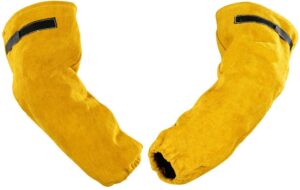 So far, we’ve described welding sleeves that focus on movability, but our fourth entry is a pair of welding sleeves that focus on heavy-duty protection above all else: the QueeLink Leather Welding Work Sleeves.
So far, we’ve described welding sleeves that focus on movability, but our fourth entry is a pair of welding sleeves that focus on heavy-duty protection above all else: the QueeLink Leather Welding Work Sleeves.
Made from 90% heavy-duty split cowhide leather, these welding sleeves will protect your arms from all levels of welding splatter and even the highest of temperatures while you’re wearing them.
The sleeves are woven using a double-layer system: the outer protective layer is made of leather, and the inner lining is made of cotton for added comfort and ventilation, and both layers are held together using top-tier heat-resistant Kevlar stitching.
Sure enough, these welding sleeves may not be as comfortable as our other entries, and they are heavier as well, but when dealing with welding hazards where cotton sleeves just won’t cut it, this is just a minor inconvenience compared to the protection they offer.
If you’re doing welding jobs that require you to have the best protection possible, go ahead and get yourself a pair of sturdy QueeLink Leather Welding Work Sleeves.
Specs:
- Material: 90% leather, 10% cotton
- Length: 18 inches
- Weight: 1.14 pounds
- Color: Yellow
Pros:
- High-quality Kevlar stitching
- Made from durable split cowhide leather
- Ideal protection against flames, heat, and welding splatter
- A two-layer system makes them both protective and comfortable
Cons:
- Rigid
5. IRONCAT West Chester Leather Welding Cape
This next entry is somewhat different than the others in terms of design compared to the others since they are actually a type of cape that has sleeves included.
Well, the design of the IRONCAT West Chester Leather Welding Cape allows them to not only protect the entire length of your arms but also protects the upper part of your torso and your neck from sparks, splatter, and heat as well.
The main fabric used is durable cowhide leather, making them ideal for more intensive welding jobs, while key areas are reinforced with additional leather padding as well, and high-quality Kevlar is what they used for the stitching.
This product’s unique design allows for the presence of soapstone pockets on each sleeve since the additional weight won’t make them slide off. More so, the wrists and collar feature adjustable snaps, so you don’t rick the sleeves rolling up during overhead welding either.
Lastly, since this product does not have a simple sleeve design, size is indeed an issue, especially in the shoulder region. Fortunately, this product is available in multiple sizes, from L to XXL.
If you think that this durable cape/sleeve hybrid is good for you, visit the IRONCAT West Chester Leather Welding Cape’s Amazon page, read more about it, see what others have to say, and decide whether it is perfect for you or not.
Specs:
- Material: Leather
- Length: 24 inches
- Weight: 1 pound
- Color: Gold
Pros:
- Unique cape-like design protects chests and neck
- Great against very hot splatter and sparks
- Made from durable cowhide leather
- Soapstone pockets
Cons:
- Actual sizes may be larger than expected
6. Tillman Welding Sleeves
Just because welding equipment is made out of leather doesn’t mean that they are all heavy and rigid since these properties are also based on the hide from which the leather is made, one perfect example is the Tillman Welding Sleeves.
They are made using high-quality top-grain goatskin leather, and it covers the entire length of your arms (22 inches), from wrist to upper arm, from all manner of sparks and welding spatter, while still being extremely supple to the touch and offering you a good degree of flexibility.
The cuffs and upper sleeves are made using fire-resistant cotton, so the place where the sleeves stay most compressed to your skin is also the place where the material lets it breathe properly as well. More so, both ends of the sleeves feature a wide external elastic that will secure the sleeve on your arm, so they don’t accidentally roll out of place.
The leather seams are held together using durable heat-resistant Kevlar stitching, so you never have to worry about these sleeves ever unraveling
These comfortable welding sleeves can be yours with a single click. Just visit the Tillman Welding Sleeves’ Amazon page and add it to your shopping cart.
Specs:
- Material: Leather
- Length: 21 inches
- Weight: 3.2 ounces
- Color: Royal Blue and white
Pros:
- Made from flexible goatskin leather
- Durable Kevlar stitching
- Covers your entire arm
- Elastic sleeve cuffs
Cons:
- The elastic in the cuffs need to be covered for protection
7. Miller Combo Sleeves
We continue our trend with lightweight fabric sleeves with our #7 entry, the Miller Combo Sleeves. These high-quality welding sleeves are made from 2 different materials: INDURA flame-resistant cotton fabric and premium pigskin leather in key areas where sparks and spatter are most likely to land.
This use of two very different materials exists so that these welding sleeves will have the best of both worlds: the cool feel and lightweight protection of cotton and the durable and enhanced heat and flame resistance of leather.
Both the top and the bottom of the sleeves are equipped with wider elastic bands that are tight enough so that the sleeves don’t roll up or down when you need them most, but also loose enough as to not restrict your blood flow if you have bigger arms.
Speaking of arms, these sleeves are 21 inches long, allowing almost full coverage of your arms from temperatures that can reach up to 400 degrees Fahrenheit. However, since they are not entirely made of leather, they are recommended to be used on light to medium intensity welding applications.
If you want welding sleeves that benefit from the protection of leather, but the comfort and freedom of cotton, go ahead and get yourself the Miller Combo Sleeves right now.
Specs:
- Material: Leather/cotton
- Length: 21 inches
- Weight: 12 ounces
- Color: Black and blue
Pros:
- Cotton build make the sleeves lightweight
- Elastic bands on cuffs offer a firm grip
- Pigskin leather protects key areas
- Highly flame-resistant
Cons:
- They may seem too long for some arms
8. Revco BSX Reinforced Sleeves
Our next entry is a pair of welding sleeves that pretty much tell you what they are meant for, and that is to protect you from fire and flames as much as possible, and they are called the Revco BSX Reinforced Sleeves.
Made from 100% flame-retardant cotton, these welding sleeves offer good protection against all welding-specific hazards, including heat, radiation, sparks, and molten spatter, although admittedly not as good as a pair of leather ones would do.
On the other hand, the fact that these welding sleeves are made completely from cotton means that your skin will breathe in them, and your movements will not be hindered at all by rigid or heavy material, making these sleeves ideal for less-intensive welding jobs where more dexterity is required.
Speaking of comfort, both ends of these sleeves are equipped with different kinds of elastic bands, and the wrist cuffs are extra long so that there’s no exposed skin between the sleeves and your welding gloves.
Lastly, we couldn’t talk about this product without mentioning the neat flame design, and these ultra-hot welding sleeves can be yours if you visit the Revco BSX Reinforced Sleeves’ Amazon page and add them to your shopping cart.
Specs:
- Material: Cotton
- Length: 19 inches
- Weight: 11 ounces
- Color: Black and red
Pros:
- Lightweight
- Lets the skin breathe
- Cuffs have elastic bands for extra grip
- 19 inches long to cover the whole arm
Cons:
- Not good against very intensive welding jobs.
9. BSV Kevlar Protective Sleeves
Cotton and leather have a long history of being used as material for making PPEs, but as time passes by and technology makes mass manufacturing cheaper, Kevlar is slowly but surely taking its place, and there’s no better way to prove it than by looking at the BSV Kevlar Protective Sleeves.
Made 100% from Kevlar woven fabric and featuring a full arm design with thumb and finger holes, these welding sleeves will provide full protection for both your arms, wrists, and the palm of your hands, although welding gloves will still be a requirement.
Besides, Kevlar has the ability to absorb any excess moisture, such as any sweating from long-term exposure to welding heat, so they let your skin breathe, and you feel fresh throughout your work shift.
Besides the good heat and fire resistance, Kevlar excels at protecting your arms against cuts, tears, and punctures, so they are not only good for welding but pretty much any heavy-duty industrial job where the threat of injury is a real thing.
Lastly, the material is woven to mold itself on the shape of your arm in a uniform way, instead of being loose on the entire arms and tight at the ends like typical welding sleeves, so you don’t have to worry about them not fitting if you have thicker arms.
If you want the protection that modern technology has to offer, go ahead and get yourself a pair of BSV Kevlar Protective Sleeves.
Specs:
- Material: Kevlar
- Length: 18 inches
- Weight: 4.8 ounces
- Color: Black
Pros:
- Good protection against cuts, punctures, and abrasion
- Completely covers the arm, wrist, and palms
- Lets the skin breathe
- Snug fit
Cons:
- Color tends to fade after washing
10. Waylander Split Leather Welding Sleeves
Last but not least on our list is the Waylander Split Leather Welding Sleeves, a pair of rugged-looking leather welding sleeves that will take care of your arms throughout their entire life while you are busy welding.
Made from authentic split leather that provides you with the best protection against welding sparks and spatters, and stitched together using the finest Kevlar thread for even more heat tolerance, chances are other pieces of protective equipment will most likely give out before these sleeves do.
The armband and wrist cuffs come with velcro straps so that you can adjust them just the way you like them and not have to worry about sleeves rolling up or falling down while you’re working, even if you’re sweating.
Not only that, but the cuffs also feature elastic thread s well, allowing for a snug fit for a wider range of arm sizes as well.
All in all, if you want a pair of welding sleeves that are as rugged as they can be, look no further than the Waylander Split Leather Welding Sleeves
Specs:
- Material: Leather
- Length: 12 inches
- Weight: 16 ounces
- Color: Dark brown
Pros:
- Sturdy design
- Flexible and comfortable
- Made from rugged split leather
- Stitched together with Kevlar thread
Cons:
- Velcro straps are prone to burns
What Should I Look For in a Pair of Welding Sleeves?
Now that we’ve showcased 10 of the best welding sleeves that you can find, we will go ahead and teach about what to look for precisely, since not all welding sleeves are created equal, and some are better at certain jobs than others, while some users may prefer them in a certain way.
Material
The first thing you need to look for in a pair of good welding sleeves is the material that they are made of since they pretty much dictate all of the other aspects that follow, such as weight, flexibility, level of protection, and more.
Leather
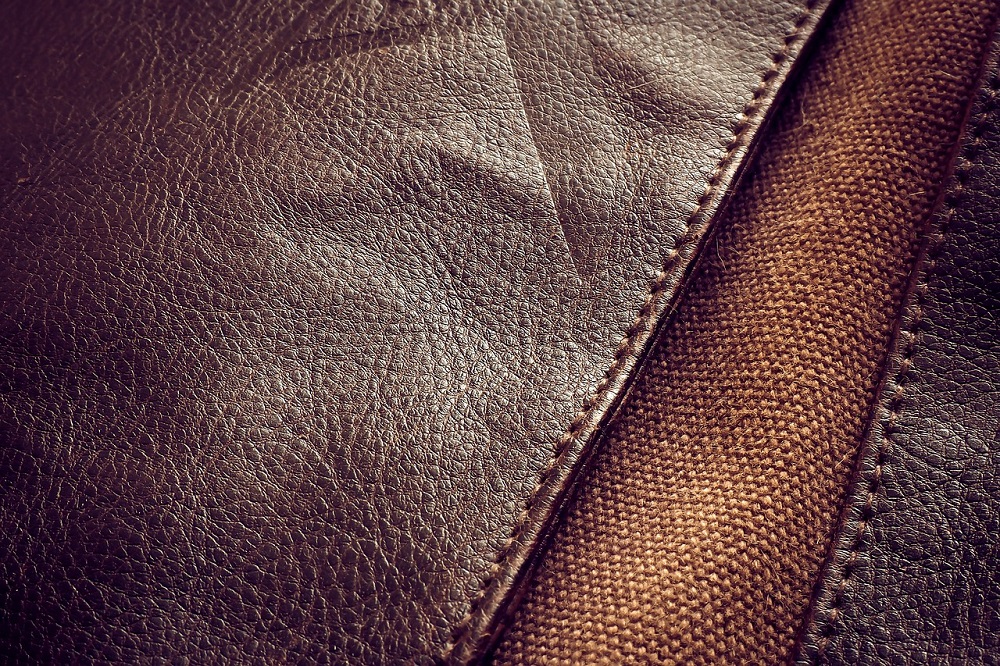
If you’ve ever browsed for welding safety equipment before, you’ll notice that most of them are primarily made out of leather, and that is not a coincidence. You see, leather is arguably the most popular material used for making welding protective equipment, be it gloves, boots, jackets, aprons, etc.
Leather is rugged, provides good resistance against lacerations and piercing, and it is fireproof even without extensive chemical treatment.
Sure enough, leather equipment has its drawbacks as well:
- It doesn’t breathe
- Can get hot to wear
- They tend to be rigid
- They tend to weigh quite a bit
Sure enough, there are plenty of types of leather available, and some are indeed better at reducing some of the drawbacks posed by generic leather. For example, there are various types of hides that can be used, depending on what you are looking for:
- Pigskin and elkskin leather – A lot of flexibility with a good degree of protection, but also a bit more expensive
- Cowhide and horsehide leather – Thicker, more protective, and cheaper, but also stiffer
- Goatskin and sheepskin – The most flexible, but also less durable than the other types of leather.
Cotton
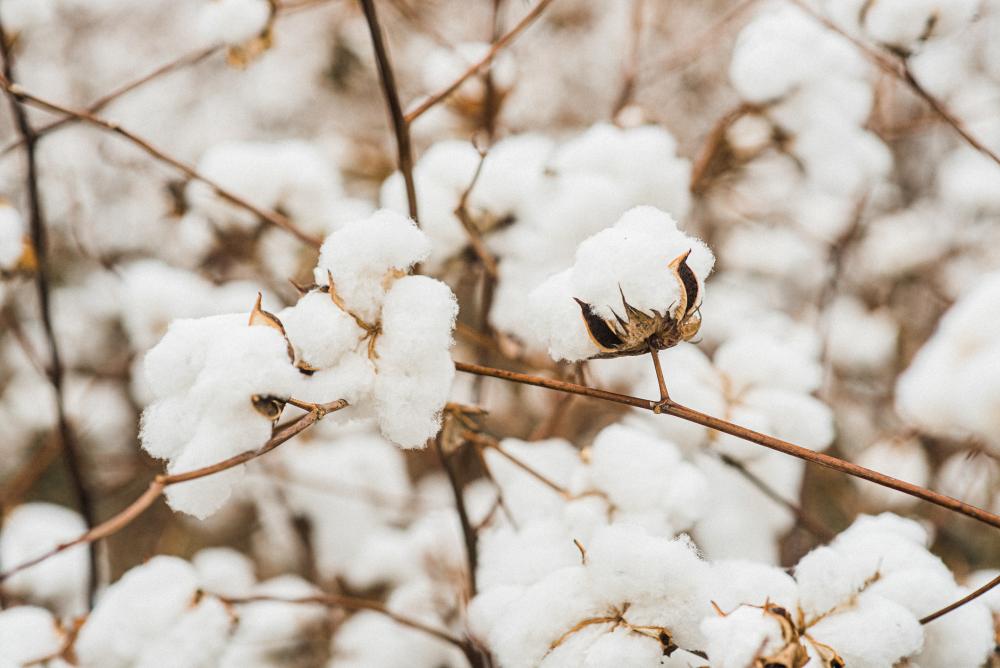
Another common material for making welding-resistant personal protective equipment is cotton, as well as cotton variations such as denim.
Sure enough, cotton itself is not inherently fire-resistant at all, but this can usually be fixed via chemical treatment, allowing them to be a more flexible alternative to leather.
Admittedly, no amount of chemical treatment can make cotton as durable as leather, as really hot splatter and sparks can still end up burning holes in the fabric, especially during really intense types of welding such as TIG welding.
However, if you’re doing welding jobs that don’t involve excessive heat and splatter, cotton welding sleeves are ideal since they are lightweight, allow your skin to breathe, and provide the greatest degree of flexibility.
Kevlar
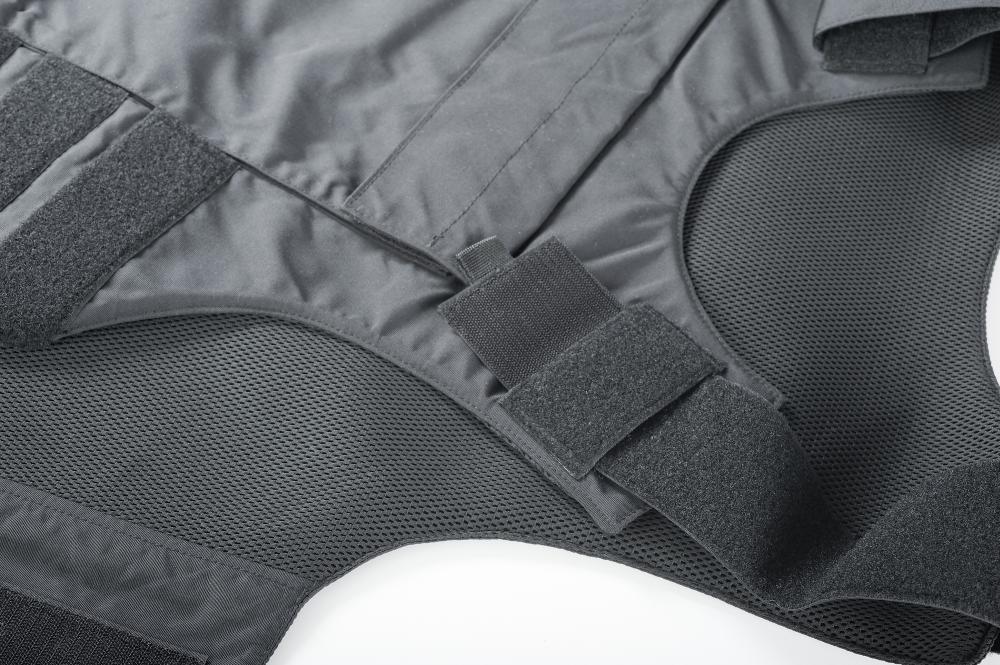
Kevlar isn’t all that popular, but not because it isn’t good, but rather because it’s just hit the market, but it is gaining larger popularity.
It can be knitted and woven just like cotton, but since the fiber itself is extremely durable, it offers complete protection against cuts, punctures, extreme heat, and molten welding splatter.
Besides, it can also be moded into sheets to be used as inner lining in protective gear, and the flexible fiber makes it ideal to be used as stitching in safety cloves as well.
Weight
If you’re a professional welder, you’ll presumably be wearing these welding sleeves during your entire shift, so 8 hours or more. If that’s the case, wearing heavy protective gear during that whole time can be very tiresome, to the point where it will surely affect your productivity.
This is especially the case if you’re doing things like overhead welding, where your arms will be lifted most of the time.
Because of that, the weight of your welding sleeves is one of the first things you should look for since you must understand that your arms will be bearing not only their weight but also the weight of your welding gloves as well.
Unfortunately, the most durable and reliable materials that can protect your arms are also the heaviest, so you need to find a perfect balance between a pair of welding sleeves that offer both decent protection and are also light enough to be bearable.
Besides, the size and the design of the welding gloves can also affect the weight, with longer sleeves being much heavier than shorter ones.
Build
Now that you know the best materials that make up a good pair of welding gloves, your next concern should be their design and the way those materials are mixed together since this can be equally important. Besides, additional accessories can also enhance your sleeves’ protective features.
For starters, sleeves should always provide a snug fit on your arms, and they should be compatible with the rest of your protective equipment, especially your gloves and jacket.
The cuffs need to be wide, stiff, but also adjustable, most ideally made using an elastic material, velcro strips, or buttons. This prevents the cuffs from sliding up or down your arm without restricting blood flow.
Even welding sleeves that are made from a single piece of material will still have some stitching, at least at the openings, so the stitching and bonding need to be solid, preferably made from material that is also durable and fire-resistant, like Kevlar.
One last neat feature you should look for in a pair of welding sleeves, although it’s not mandatory, is for them to have thumb and finger notches. They allow your welding sleeves to cover parts of your hands, and this is a feature you’ll most commonly see in modern Kevlar welding sleeves.
Sure enough, your fingers will still be exposed, so a pair of welding gloves will still be necessary, but at least you know that with this type of welding sleeves, your wrists are fully covered.
Flexibility
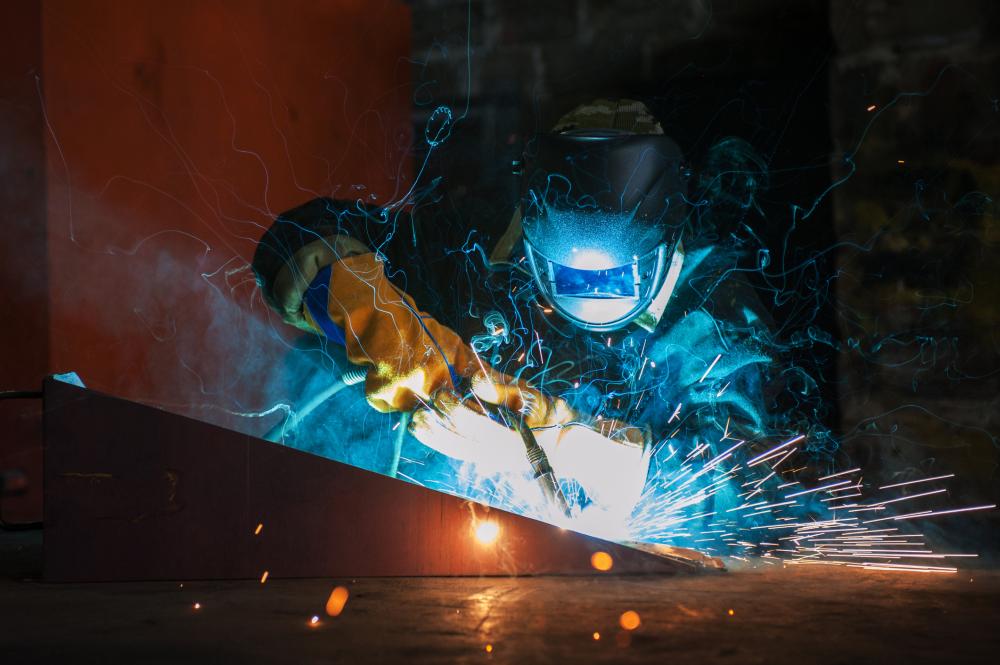
Materials and design dictate another important aspect that you need to look for in a pair of good welding sleeves, and that is their flexibility and how much freedom of movement they allow for your arms. We already mentioned that leather is the most protective, but it’s also the most rigid material as well.
Sure enough, many fabrics are flexible, can stretch, and provide your arms with a snug fit without restricting their movements at all, but this usually comes at a price in terms of the levels of protection that they provide.
However, since some welding jobs result in less heat and splatter, you can always go for the more comfortable and more flexible sleeves when doing those particular jobs.
On the other hand, if the type of welding is one with a lot of radiation, heat, and splatter, it’s best to forgo a bit of comfort for the sake of safety, so go with the more rigid but also safer sleeves.
Comfort
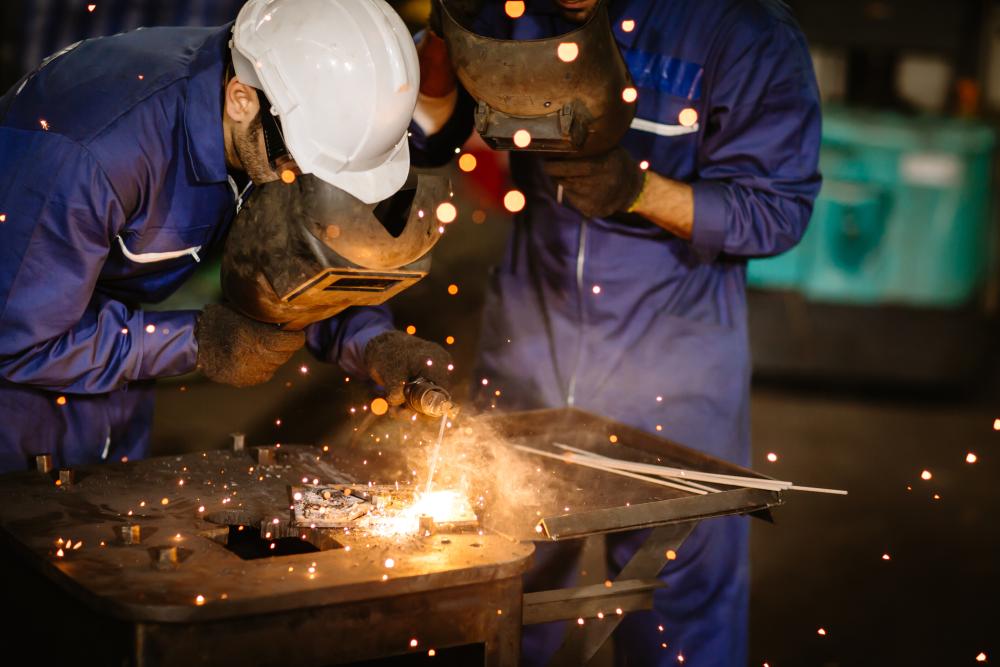
Somewhat related to flexibility, comfort is another important aspect you should consider when buying a pair of welding shoes.
You see, whenever you’re wearing something uncomfortable for a long time, your first instinct will be to take it off completely and work without it, but since we’re talking about safety equipment here, that’s not exactly something we recommend.
Because of this, safety is a primary concern when designing welding sleaves, while comfort is treated as a secondary trait. However, there are welding sleeves that offer both top-tier protection and are comfortable, soft, and breathable, but they usually end up costing a bit extra too.
Then again, if you’re making a living out of welding, or if you have the ability to get your employer to buy them for you, you might as well go for the safest and most comfortable welding sleeves on the market.
Work Environment
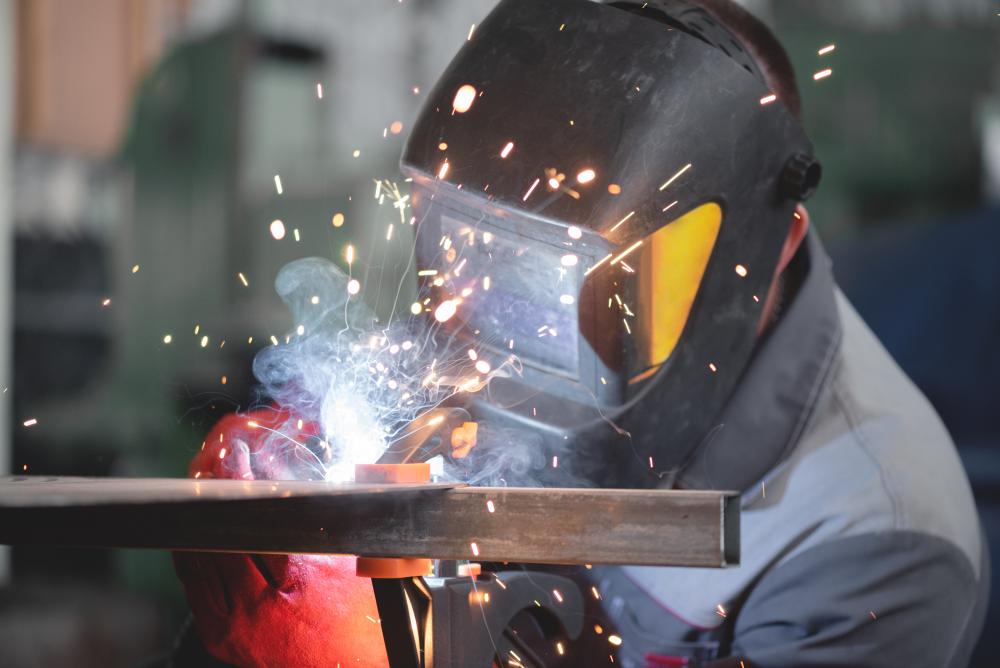
Your workplace environment should also play a role in your decision when browsing for welding sleeves. For example, if you work somewhere where you’ll only be doing high-intensity welding with lots of heat, radiation, and splatter, you should get the most protective welding sleeves available.
On the other hand, if you work somewhere where you need to keep the sleeves on throughout your entire work shift, or if you’re working somewhere with a very warm climate, focus on getting a pair of welding sleeves that are lightweight, breathable, comfortable, and overall easier to wear over extended periods of time.
Employee Purchase Program
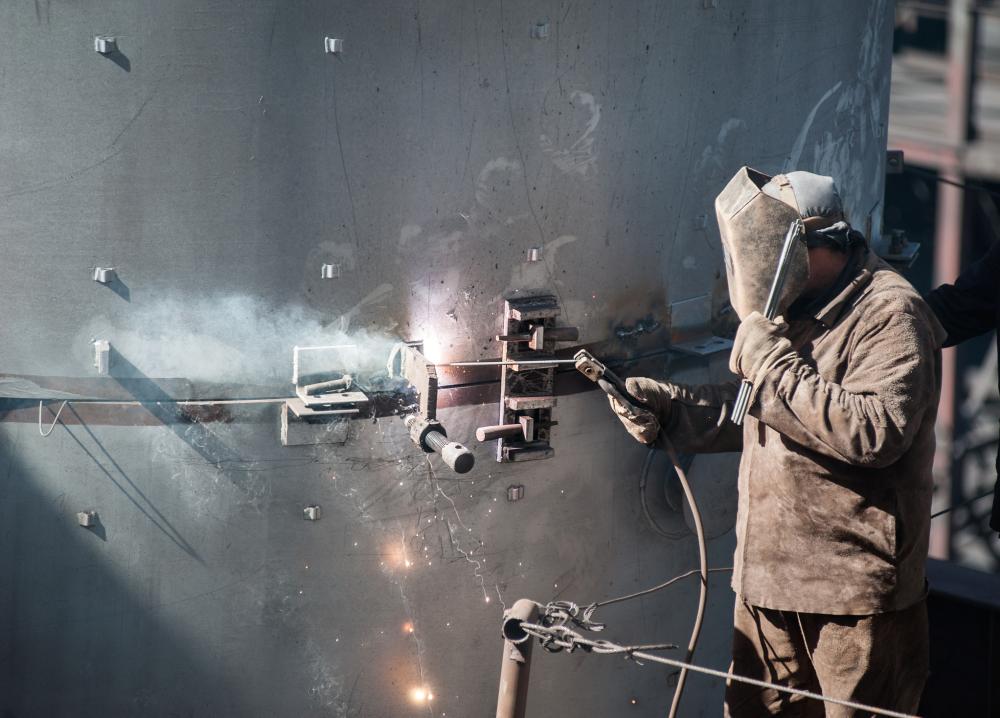
Work safety regulations and standards around the world dictate that employers should provide their workers with all of the appropriate personal protective equipment depending on the type of job that they are performing, and in the case of welders, this should also include welding sleeves.
More so, certain companies may offer employee purchase programs, which provide workers with a convenient way to get safety equipment through payroll deduction. Depending on the terms of your employment, as well as safety regulations, your employer may even offer complete reimbursements for your protective gear, welding sleeves included.
If that’s the case for you as well, you can go ahead and buy the safest and most comfortable pair of welding sleeves since the budget will no longer be a concern.
Workplace Safety Equipment Considerations
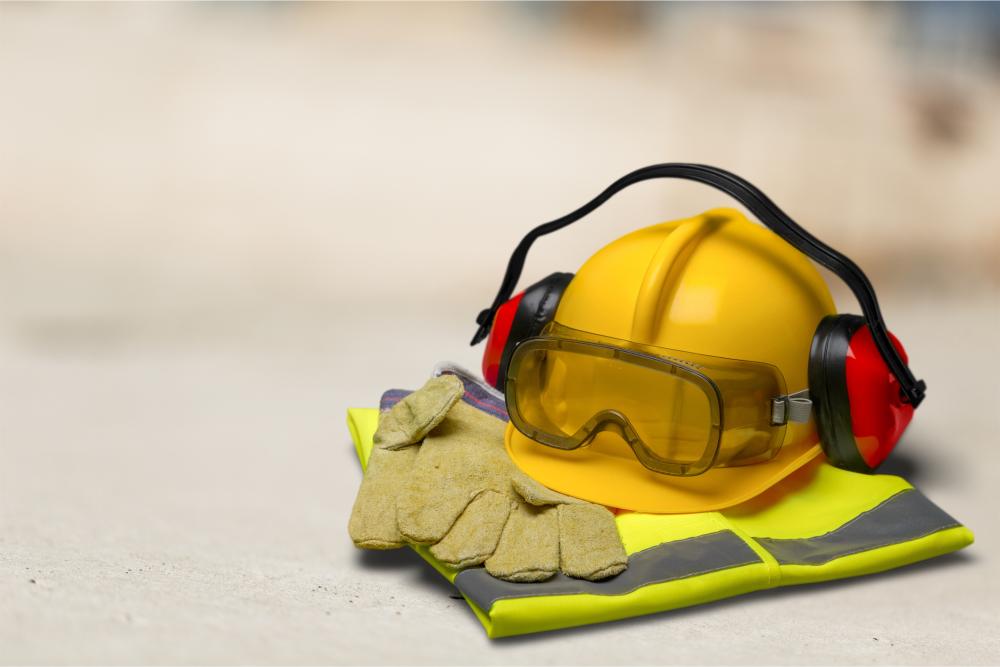
While this entire article is about welding sleeves, what to look for in a pair of welding sleeves, and which are the best welding sleeves, we would like to remind you that it’s essential that your entire body is protected during welding jobs, not just your arms:
- Eyes and face – Welding goggles or a welding mask
- Torso and/or arms – Welding jackets
- Hands – Welding gloves
- Feet – Welding boots
Make sure that are of the above-mentioned equipment is made of the most durable and comfortable materials (leather, cotton, etc), and make sure that they all meet safety standards appropriate for your particular jobs.
Best Welding Sleeves: Closing Thoughts
Our article has come to an end, and we hope that we managed to teach you something about the importance of buying the right safety gear and how you can choose the best safety gear given a particular job.
Sure, you can always choose not to use any kind of safety equipment, but the risks that you are exposing yourself to are not worth a few extra dollars, especially when hospital bills are far more expensive.
Besides, the damage that workplace accidents can inflict can sometimes be irreparable or even fatal, so think twice next time you do something as dangerous as welding without a mask, gloves, sleeves, or jacket.
All in all, the products we recommended in our article were chosen so that a lot of possible scenarios will be covered, from heavy-duty leather welding sleeves that can withstand the most intense levels of heat and splatter to light-weight sleeves that provide decent protection, but are comfortable to wear, easy to around in, and let your skin breathe.
The post Best Welding Sleeves That Keep Your Arms Safe From Burns appeared first on DIYs.com.

